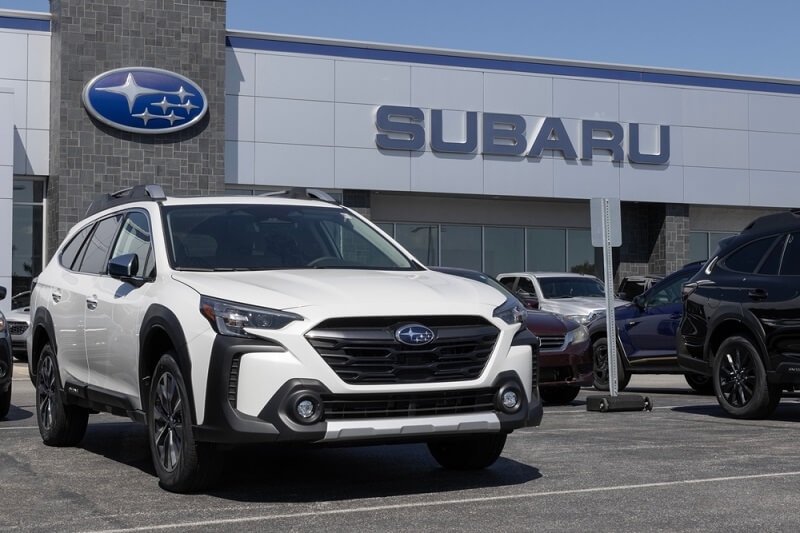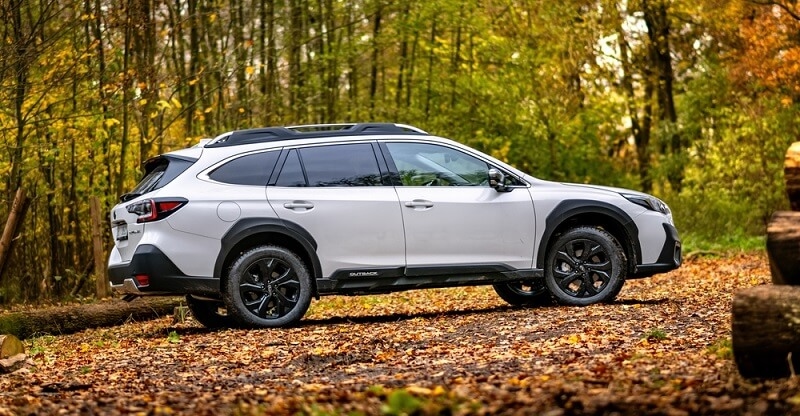
The Subaru Outback Wilderness is Subaru’s way of saying, “Yes, we see you, adventure crowd.” It’s rugged, lifted, kitted with trail gear, and wrapped in a look that screams outdoors. But is it truly built for backcountry trails, or is it just another dressed-up crossover cashing in on the off-road craze?
With the 2025 Subaru Outback Wilderness out now and the 2026 Subaru Outback Wilderness already on the horizon, it’s a good time to break it down. We’ll get into what makes it different, what’s worth paying for, and whether it’s trail-ready or simply a trend riding the overlanding wave.
Subaru didn’t just slap a badge on the Outback and call it a day. The Subaru Outback Wilderness gets mechanical upgrades that matter when you leave pavement behind.
The 2025 model comes with a 2.4-liter turbocharged BOXER engine pushing 260 horsepower and 277 lb-ft of torque. It pairs with Subaru’s Symmetrical All-Wheel Drive and an upgraded dual-function X-Mode, giving you extra grip in mud, snow, or loose dirt. Ground clearance jumps to 9.5 inches — more than most crossovers in its class — and approach/departure angles improve for better obstacle clearance.
There are real hardware changes too: longer-travel suspension, skid plates, all-terrain Yokohama GEOLANDAR tires, and revised final-drive gearing for more low-speed grunt on steep climbs. These are the kinds of changes that separate marketing fluff from functional upgrades.
Explore More: Unveiling the Future of Driving at the Auto Show Events
The 2025 Subaru Outback Wilderness is a clear evolution of the Outback’s adventurous side. You get:
Inside, it’s built for people who don’t baby their cars. Water-resistant StarTex upholstery, all-weather floor liners, and plenty of cargo space mean you can load it with camping gear without worrying about muddy boots or wet clothes.
The 2026 Subaru Outback marks a generational shift. Subaru is refining the Outback’s look and improving tech across the board. The 2026 Subaru Outback Wilderness will keep the same formula but add refinements:
The subaru outback 2026 lineup will still have more road-friendly trims, but the Wilderness will continue to be the one you buy if you want a factory-ready adventure setup.

Yes, the Wilderness trim has an outdoorsy style — aggressive cladding, chunky bumpers, and that signature matte-black hood decal to cut glare — but most of it serves a purpose.
The high-mounted fog lights stay out of harm’s way on rocky trails. The aggressive wheel arch cladding helps fend off stone chips. And the 17-inch matte-black wheels wrapped in all-terrain tires give better bite in dirt while taking the edge off potholes.
While some rivals try to look tough without changing much underneath, the Subaru Outback Wilderness blends its visual cues with real upgrades.
More to Discover: Subaru Outback vs Toyota RAV4: AWD SUV Comparison
Trail-focused trims often sacrifice comfort. The Wilderness doesn’t. It’s still a roomy, comfortable cabin with heated seats, dual-zone climate control, and an 11.6-inch STARLINK touchscreen.
The big difference is in the materials. The StarTex seats can take rain-soaked jackets or dusty hiking gear without staining. The rear seats fold almost flat, giving you a massive cargo area — big enough for gear, a bike, or even to sleep in if you’re packing light.
The 2026 Subaru Outback Wilderness will see optional upgrades like ventilated seats, a 360-degree camera system for tight trail spots, and richer interior trims for those who want comfort with their capability.
On paved roads, the Wilderness feels much like a regular turbocharged Outback — smooth, stable, and with enough power for highway passing. The difference shows up when the asphalt ends.
The tuned suspension absorbs washboard dirt roads without rattling your teeth. X-Mode’s traction control makes slick hill climbs drama-free. That extra ground clearance gives peace of mind when cresting over blind rises or rolling through ruts.
In short: If your driving rarely leaves pavement, the capability might be overkill. But if you have even semi-serious trail plans, you’ll appreciate the engineering.
Off-road hardware comes with trade-offs. The 2025 Subaru Outback Wilderness returns around 21 mpg city and 26 mpg highway — a bit less than non-turbo trims, but still solid for its class.
Towing tops out at 3,500 lbs, plenty for small campers, boats, or utility trailers. The gearing tweaks make towing feel less strained compared to standard trims. Expect similar numbers for the 2026 Subaru Outback Wilderness unless Subaru surprises us with a hybrid or mild-hybrid variant.
The regular 2025 Subaru Outback and the upcoming subaru outback 2026 are great all-rounders. They’re easier on fuel, ride a touch smoother, and cost less. But they don’t have the same hardware for real off-pavement driving.
If your “off-road” is mostly gravel driveways and the occasional camping trip on maintained roads, the standard trims make more sense. If you’re tackling rough forest roads, deep snow, or towing adventure gear, the Wilderness earns its keep.
Outdoor-themed crossovers are everywhere now — from the Toyota RAV4 TRD Off-Road to the Honda Passport TrailSport. Some of these trims are mostly cosmetic. The Subaru Outback Wilderness isn’t.
Its capability upgrades are real, and they’re backed by Subaru’s proven AWD system. Yes, it also taps into the “overlanding lifestyle” market, but it delivers more than just image. If Subaru wanted a pure marketing play, they wouldn’t have bothered with unique gearing, heavy-duty suspension, or a higher tow rating.
You may also like: Ford F-150 Hybrid Review: Power, Towing & Efficiency
The Subaru Outback Wilderness is more than a styling package. The 2025 version already delivers genuine off-road ability straight from the factory. The 2026 Subaru Outback Wilderness builds on that with better tech and refined details, making it even more appealing for adventure-minded drivers.
If you’re a weekend trail seeker or someone who wants a vehicle that can comfortably haul gear into the mountains, this trim makes sense. If you just want the look, you’re better off with a standard Outback — it’ll save you money without giving up the core Subaru virtues.
In the end, this isn’t just a trend. It’s Subaru making a capable wagon-SUV hybrid even better for the people who will actually use it.
This content was created by AI